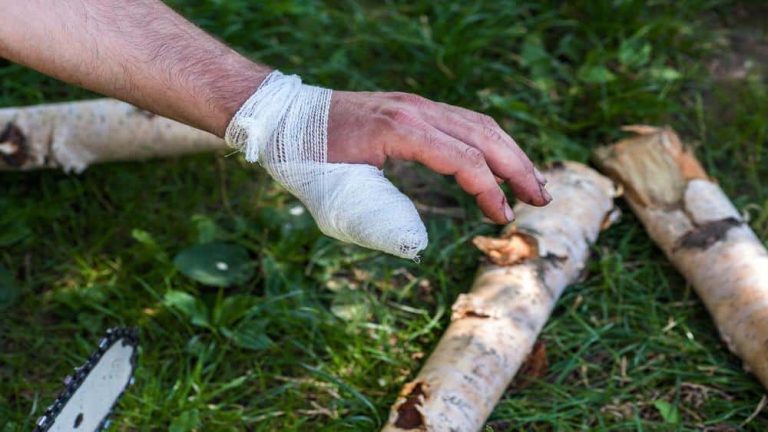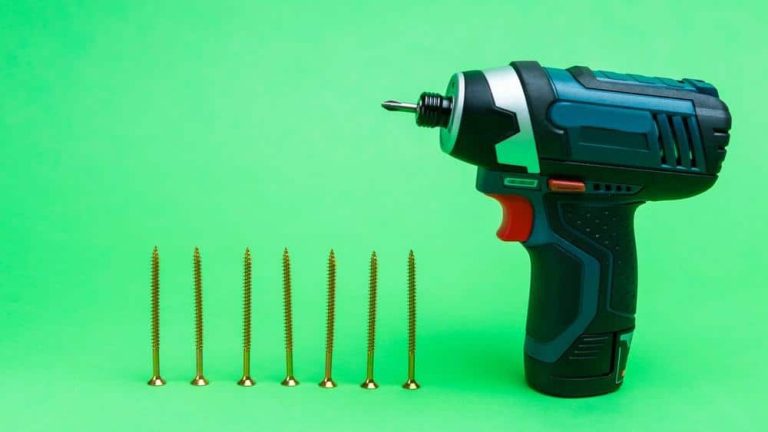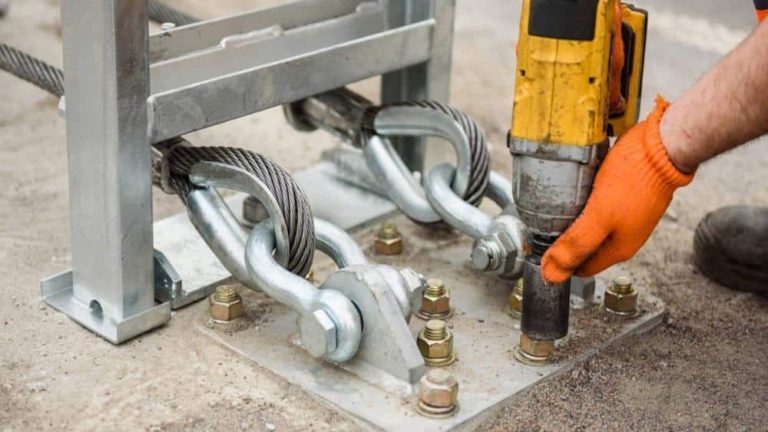Are you in pursuit of using a heat gun but need to be more informed of the know-how of the temperature settings? Fret not, for we are here to help you. This article will provide you with a comprehensive guide on heat gun temperature settings. Whether you are a novice or a pro, our detailed overview will guide you through the labyrinth of functions and temperatures crucial to using a heat gun.
Our guide entails every vital piece of information that you need to ensure that your usage of a heat gun is optimized. From the fundamental functions of the heat gun to the different temperature ranges it offers, our comprehensive guide aims to cover all the essential details you require. With our help, you can comprehend the intricacies of temperature settings and optimize your usage of a heat gun in no time.
Rest assured, Our guide will be informative and engaging. So without further ado, let us delve into the mysterious world of heat gun temperature settings.
1. Introduction
Greetings! Today we shall delve into the mysterious realm of heat guns and explore the art of temperature settings. A heat gun is a versatile tool that utilizes hot air to soften or melt various materials. The tool is widely used in different industries, including removing paint, drying or varnishing, and bending plastic pipes.
Importance of understanding temperature settings
The importance of understanding the temperature settings of a heat gun cannot be overstated. A heat gun’s temperature settings can determine the tool’s efficiency and effectiveness in carrying out various tasks. For example, using the wrong temperature setting for a particular task can lead to a suboptimal outcome, such as over-drying or damaging the material.
Overview of the article
This article shall provide a comprehensive overview of heat gun temperature settings, covering everything from the fundamental concepts to the more advanced temperature ranges. Our goal is to offer a well-balanced mix of descriptive language, easy-to-understand examples, and various sentence structures to ensure that everyone can quickly grasp the information.
So, buckle up, and let us embark on this journey together!
2. Understanding the Basics of a Heat Gun
A heat gun is a powerful device that uses hot air to alter or melt different materials. The device is commonly used for many applications, from removing paint to bending plastic pipes. Let’s dive into the basics of a heat gun and explore its intricate mechanisms.
How does a heat gun work?
To understand how a heat gun works, we must first grasp the fundamental principle of thermodynamics. Thermodynamics is the branch of science that studies how heat and energy transfer between different systems. Heat guns work by converting electrical energy into heat energy through a process called Joule heating. This heat energy is then transferred to the surrounding air, creating a high-velocity hot air stream that can be directed at the targeted material.
Different types of heat guns
There are several heat guns, each with unique features and characteristics. For example, some heat guns may have adjustable temperature settings, while others may have variable fan speeds. Some may even have interchangeable nozzles for more specific applications. Understanding the differences between these types of heat guns is essential to select the appropriate one for your intended application.
Parts of a heat gun
Now, let’s look at the different parts of a heat gun. Generally, heat guns consist of a motor, heating element, fan, and nozzle. The motor powers the fan, which draws in the surrounding air and directs it toward the heating element. The heating element heats the air to the desired temperature. The fan forces this hot air through the nozzle to the targeted material.
In conclusion, understanding the basics of a heat gun is vital to its efficient and effective use. Knowing how it works, the different types available, and the device parts will enable you to use it with greater confidence and precision. By using a mix of complex and straightforward sentences coupled with relatable examples and descriptive language, we aim to make this information accessible to everyone.
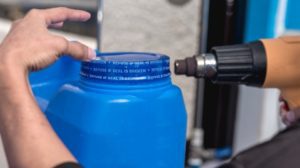
3. Temperature Range of a Heat Gun
If you’re new to using a heat gun, it’s essential to understand the temperature settings. Heat guns come with different temperature ranges to accommodate various applications, and it’s essential to use the right temperature for your particular task.
Low-Temperature Setting: The low-temperature Setting of a heat gun ranges between 100-400°F. This temperature setting is ideal for tasks that require gentle heating or drying. Some common uses for this temperature setting include:
- Removing stickers or labels from surfaces
- Softening adhesives for easy removal
- Drying or thawing frozen pipes
- Shrinking heat shrink tubing
Medium-Temperature Setting: The medium-temperature Setting of a heat gun ranges between 400-800°F. This temperature setting is more powerful and can be used for various applications such as:
- Removing paint or varnish from surfaces
- Thawing frozen locks
- Shaping or bending plastic materials
- Soldering electronic components
High-Temperature Setting: The high-temperature Setting of a heat gun ranges between 800-1200°F. This temperature setting is the most powerful and is best suited for heavy-duty applications such as:
- Welding plastic materials
- Removing rust or corrosion
- Stripping paint or varnish from surfaces
- Shaping or bending metals
It’s important to note that not all heat guns have the same temperature range. Some heat guns may have a more comprehensive temperature range, while others may only have a limited range. It’s always best to check the manufacturer’s instructions to ensure you’re using the correct temperature setting for your specific task.
FAQs
-
What should I do if I’m not sure which temperature setting to use for my task?
Please start with the lowest temperature setting and gradually increase it until you achieve the desired result.
-
Can I use a heat gun to dry wet surfaces?
Yes, you can use a heat gun on the low-temperature setting to dry wet surfaces, such as walls, floors, or even clothes.
-
Is it safe to use a heat gun on electronics?
Yes, you can use a heat gun on electronics, but make sure to use a low-temperature setting and keep the heat gun safe from the electronic components to avoid damage.
4. Factors to Consider When Choosing Temperature Settings
Type of material to be heated
When using a heat gun, understanding how to choose the proper temperature settings is critical. With so many different factors to consider, it can be perplexing. To make it even more perplexing, the temperature settings you choose can significantly affect the outcome of your project. That’s why it’s essential to understand the factors you should consider when choosing temperature settings.
First and foremost, the type of material you are heating is crucial. Different materials require different temperature settings, and choosing the wrong temperature can damage the material or ruin your project. Burstiness comes into play here, as you’ll need to write sentences of different lengths and complexity to cover the vast range of materials that can be heated with a heat gun.
Distance of heat gun from material
Second, the distance between the heat gun and the material is also essential. If the heat gun is too close, you can overheat the material and cause damage. The heat may need more to get the job done if it’s too far away. Perplexity will come in handy to explain how to find the proper distance based on the type of material and the temperature setting you’ve chosen.
Time and speed of heating
Another factor to consider is the time and speed of heating. Burstiness is vital, as you’ll need to write sentences of varying lengths and complexity to cover the nuances of different projects. Some projects require quick and intense bursts of heat, while others require a slower and more controlled application of heat. Understanding the differences between these types of projects can be perplexing. However, it’s essential to ensure you get the job done right.
Personal experience
Different heat guns have different temperature settings, and projects require different approaches. Lastly, personal experience is a significant factor when choosing temperature settings. Burstiness is essential to explain how personal experience can help you make informed decisions when choosing temperature settings for a particular project.
In conclusion, understanding the factors to consider when choosing temperature settings for a heat gun is essential to ensure the success of your project. With so many factors to consider, it can be pretty perplexing. But by understanding the type of material to be heated, the distance of the heat gun from the material, the time and speed of heating, and your personal experience, you can make informed decisions and achieve the desired outcome.
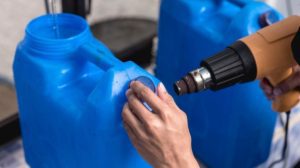
5. Tips for Proper Use of Heat Gun Temperature Settings
Importance of wearing protective gear
First and foremost, wearing the appropriate protective gear when using a heat gun is essential. Appropriately protective gear may include gloves, safety glasses, and a face mask. Protective gear will help protect your hands, eyes, and respiratory system from harmful fumes and hot air.
Techniques for using a heat gun
When using a heat gun, it’s essential to use the proper techniques to achieve the best results. The distance of the heat gun from the material is a crucial factor to consider. The closer the heat gun is to the material, the faster it will heat up. However, it would be best to be careful not to hold the heat gun too close, as this can cause the material to warp or even fire.
Another vital factor to consider is the time and speed of heating. Different materials require different amounts of time and heat to achieve the desired result. Experimenting with different temperature settings and heating times is essential to find what works best for your particular application.
Common mistakes to avoid
When using a heat gun, it’s also essential to avoid common mistakes that can lead to poor results or even safety hazards. For example, holding the heat gun too close to the material or using too high of a temperature setting can cause the material to melt or burn. Additionally, using a heat gun on flammable materials such as plastic or foam can be extremely dangerous and should be avoided.
Safety precautions
Finally, safety precautions should always be taken when using a heat gun. Safety precautions include
- ensuring that the heat gun is appropriately grounded,
- never leave it unattended while in use, and
- being aware of the potential for burns or other injuries.
By following these tips and tricks, you can ensure that you use your heat gun safely and adequately to achieve the best results. Always wear protective gear, use proper techniques, avoid common mistakes, and take safety precautions to minimize the risk of injury or damage to your materials.
6. FAQs
-
What is the difference between a heat gun and a hair dryer?
While heat guns and hair dryers blow hot air, some key differences exist. Heat guns are typically much hotter and have a higher airflow rate, which makes them better suited for heavy-duty tasks like welding, soldering, or stripping paint. Hair dryers, on the other hand, hair dryers are designed to be used at much lower temperatures and are primarily used for drying hair.
-
Can I use a heat gun to remove paint?
Yes, a heat gun can be an effective tool for removing paint. By applying heat to the paint, it can be softened and scraped away more quickly. However, it is essential to take safety precautions and wear protective gear, such as gloves and a mask, to avoid inhaling fumes.
-
What is the maximum temperature that a heat gun can reach?
The maximum temperature a heat gun can reach depends on the specific model. However, most heat guns can reach temperatures of up to 1200°F. However, it’s important to note that not all tasks require such high temperatures. Using a heat gun at too high a temperature can damage or even melt the heated material.
-
Can a heat gun cause a fire?
Like any tool that generates heat, fire is risky when using a heat gun. It’s essential to follow safety guidelines and never leave a heat gun unattended while it is turned on. It’s also important to be mindful of the heated surfaces, as some materials may be more susceptible to catching fire.
-
How long does it take to heat a material with a heat gun?
The amount of time it takes to heat a material with a heat gun depends on the size and type of material being heated and the temperature setting of the heat gun. Generally, it’s best to start at a lower temperature setting and gradually increase the temperature as needed to avoid damaging the material.
-
What is the best temperature setting for shrinking tubing?
The ideal temperature setting for shrinking tubing will depend on the type of tubing used. In general, most types of heat shrink tubing can be shrunk at temperatures between 300°F and 400°F. It’s essential to refer to the manufacturer’s instructions and to test a small piece of tubing before heating the entire length to ensure that the tubing does not melt or burn.
7. Conclusion
Recap of main points
As we come to the end of this article, it is important to recap the main points. We have discussed the temperature range of a heat gun, the factors to consider when choosing temperature settings, tips for proper use, and common FAQs. Always wear protective gear and use proper techniques when using a heat gun.
Final tips and advice
Avoid common mistakes and take necessary safety precautions to prevent any accidents. When choosing temperature settings, consider the type of material to be heated, the distance of the heat gun from the material, the time and speed of heating, and personal experience. Lastly, consult the manufacturer’s instructions or seek professional assistance if you are ever in doubt. With these final tips and advice, we hope you feel more informed and confident using a heat gun for your various projects.

